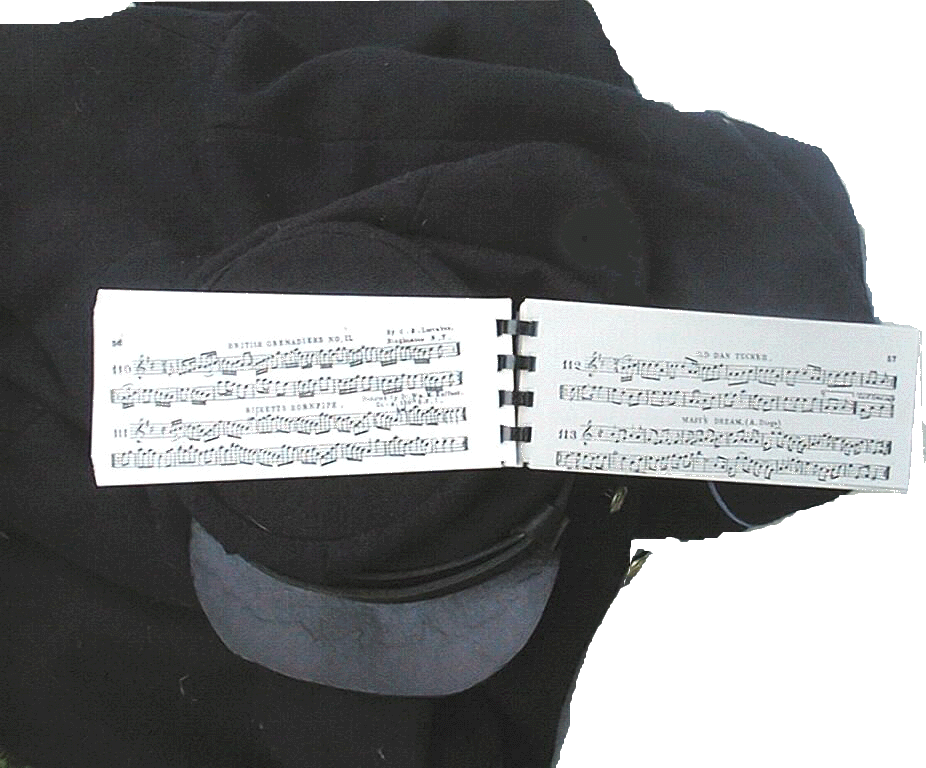

Nothing binds the minds and
hearts of men more than serving in combat together. After the Civil War ended,
veterans went home to their families and homes, keeping in touch with their comrades
in any way possible. Some bore war-related injuries and others had experienced
difficulty in collecting well-deserved pensions. To resolve these and other problems,
an organization was founded in Decatur, Illinois in 1866. Membership was open
to veterans of all of the armed forces who served between April 12, 1861 and April
9, 1865. It was called the Grand Army of the
Republic.
The
organization established local "departments" and "posts" not
unlike the Veterans of Foreign Wars today. The G.A.R set about providing assistance
in obtaining healthcare for wounded veterans, pension benefits, etc. As time went
on, they occasionally held encampments, often on the sites of various battlefields.
Musicians from different units from around the country would get together and
perform the tunes they knew so well.
On May 5, 1868, the G.A.R. designated May 30 as Memorial Day, in memory of all veterans who have made the supreme sacrifice. Americans have celebrated this holiday ever since with parades, memorials, and other ceremonies.

At the end of the Civil War, the bond between many musicians grew stronger, leading to the growth of the fife and drum corp movement in the United States. A spin-off from the G.A.R., the National Association of Civil War Musicians, published the American Veteran Fifer in 1905.
Pocket-size,
with its original red cover, this wonderful book contains 158 fife tunes, camp
duties and calls that are often played today by Civil War reenactors and Ancient-style
fife and drum corps musicians alike. It was a principal music source during the
fledgling days of the fife and drum corps movement and still is today. Taking
the time to peruse the pages, one can view not only the music, but the names and
units of the musicians  who
contributed the various pieces. For example: Haste To The Wedding and White
Cockade were "donated" by John Benjamin,
Co. G., 30th Michigan Volunteer Infantry. One of my life-long favorites,
The Dashing White Sergeant, was contributed
by E.G.H. Higgins,
Springfield, Ohio, Orderly Sergeant, Co.A., 184th Ohio Volunteer Infantry.
Biddy Oats and Montezuma came from J.E.
Blatchley, of Co. E., 2nd New York Heavy
Artillery. Taken from the recollections of actual Civil War musicians,
these tunes are easily certified to be authentic to that conflict and some from
much earlier times.
who
contributed the various pieces. For example: Haste To The Wedding and White
Cockade were "donated" by John Benjamin,
Co. G., 30th Michigan Volunteer Infantry. One of my life-long favorites,
The Dashing White Sergeant, was contributed
by E.G.H. Higgins,
Springfield, Ohio, Orderly Sergeant, Co.A., 184th Ohio Volunteer Infantry.
Biddy Oats and Montezuma came from J.E.
Blatchley, of Co. E., 2nd New York Heavy
Artillery. Taken from the recollections of actual Civil War musicians,
these tunes are easily certified to be authentic to that conflict and some from
much earlier times.
The final encampment
of the G.A.R. took place in Indianapolis in the year 1949. The
last surviving member, Albert Woolson, died in 1956 at the
ripe old age of 109. During the Civil War, he was a drummer boy who undoubtedly
had played many of the tunes that were later published in this book.
89
pages in length, American Veteran Fifer is
![]() to the way it appeared when originally published.
to the way it appeared when originally published.
It
is now available from BeAFifer for $14.95, plus shipping.
To order one, click on the
fife. ![]()